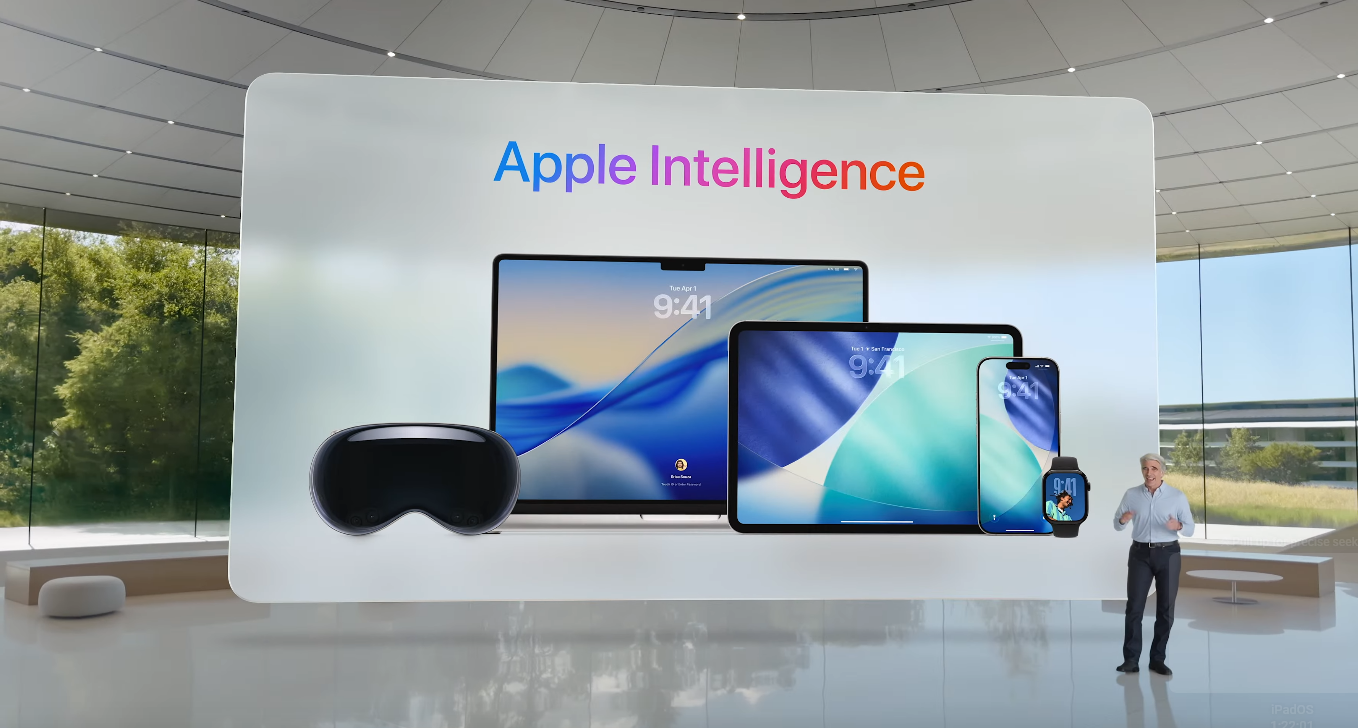With on-device AI, is Apple making a move no one saw coming?
Apple isn’t just sharing its AI. It’s betting developers will finish the job.

On Monday, day one of WWDC, Apple finally gave developers the keys to its local AI engine. Dubbed Foundation Models, this on-device framework lets third-party apps tap into Apple Intelligence’s generative muscle without cloud access, API fees, or permission slips. Just three lines of Swift code, and you’re off to the races.
On paper, it's a gift. But look closer, and it might be a white flag.
Rather than chase Google and OpenAI with its own killer apps, Apple is throwing open the App Store doors and crossing its fingers. If that sounds a little too generous from Apple, there’s a reason: This might be less about Apple flexing its AI dominance and more about admitting that it’s behind. It's also a move that would've been hard to predict just a year ago.
Letting developers build the next ChatGPT alternative or journal-coaching wizard is both strategic and convenient. And some may even consider it necessary.

A shortcut through Apple’s AI shortcomings
Rather than try to outmaneuver an increasingly smart Google Gemini or OpenAI’s GPT-5 with a headline-stealing chatbot, Apple is outsourcing the hard part.
The Foundation of Foundation Models isn’t about competing feature-for-feature but rather enabling a wave of third-party AI apps and praying the best ones rise to the top.
That means Apple can skip the messiness of building one perfect assistant (Siri) and instead position itself as the AI foundation that everyone else can build on.
Sign up to receive The Snapshot, a free special dispatch from Laptop Mag, in your inbox.
It’s no secret that Siri has struggled to evolve, and Apple’s cloud-scale LLMs still lag competitors in size and polish. So instead of outbuilding them, Apple is out-delegating them.
Instead of outbuilding its AI rivals, Apple is out-delegating them.
This strategy plays to Apple’s strengths: hardware optimization, privacy-first design, and a locked-in App Store ecosystem that still shapes what “mobile software” looks like.
If someone builds the next breakout AI experience on iOS, Apple wins, whether it wrote the code or not. There’s no licensing, no throttling, and no user data leaving the device. Developers are already embracing this offer.
Journal app Day One is rolling out smart journaling suggestions, and AllTrails will soon auto-generate hiking routes. But those are just early ripples.
The real wave will be niche apps, side projects, and indie utilities that flood the store with personalized, privacy-first AI helpers. With zero cloud overhead and no per-query costs, even small indie teams can afford to get weird with it.

Apple’s Intel Inside moment?
We’ve seen this before. Apple didn’t make the most popular fitness app; it built the Apple Watch. It didn’t build the App Store’s most iconic games; it gave developers the tools to build them. The difference this time is that Apple needs developers to carry the load.
You can think of this as Apple taking the Intel Inside approach, but with AI.
You can think of this as Apple taking the Intel Inside approach, but with AI. Much like Intel once did, Apple’s AI will quietly power thousands of experiences, even if it never becomes the household name.
By embedding itself as invisible infrastructure, Apple gains reach and resilience. Don’t have a killer AI app? No problem. Let the App Store figure it out. Eventually, someone will.
Here’s the gamble for Apple
There’s no way to sugarcoat the fact that while Apple’s AI rollout was elegant in presentation, it’s arguably light on the finished features.
Once again, Siri was sidelined at WWDC. The flashy demos — writing replies in Messages or summarizing Notes — rely on a combination of on-device and cloud processing, and many will not arrive in beta form until the fall.
So what’s Apple doing instead? It’s hedging its bets.
Apple is flooding the space by letting developers plug into Foundation Models. Don’t have a killer first-party AI experience? No problem. Let the App Store build five hundred.
With no API fees or usage caps, Apple is effectively inviting devs to throw ideas at the wall and see what sticks, hoping that at least a few do.
Apple is effectively inviting devs to throw ideas at the wall
This approach isn’t without risk. For one, Apple can’t guarantee results. A decentralized AI push means wildly inconsistent UX. Some apps will handle context and prompts gracefully. Others might deliver clunky, confusing, or outright inaccurate outputs.
Unlike Siri, which Apple can directly improve, these experiences will be fragmented and difficult to course-correct without heavy-handed store moderation.
There’s also the discoverability problem. If Apple Intelligence–powered apps flood the store, users won’t necessarily know which ones are useful.
Without tight integration or prominent editorial guidance, Apple risks unleashing a thousand half-baked AI clones, each with a slightly different idea of what “smart” means.
And then there’s hardware load. Running a 3-billion parameter language model on an iPhone may sound cool on stage, but developers will have to wrangle with battery drain, thermal throttling, and limited RAM, especially on older devices.
Apple’s own engineers were quick to highlight quantization and token efficiency, but this still isn’t free. The user pays in performance, even if they’re not paying in dollars.
AI, the Apple way
Still, there’s brilliance in the chaos.
By sidestepping the cloud arms race, Apple is leaning into what makes its ecosystem unique: Privacy, silicon, and a developer community that (usually) figures things out. This is Apple AI as infrastructure, not as identity. That might just work.
Apple will still win if the next great AI assistant comes from a developer in Portland or Tokyo. And if not? Well, at least it didn’t spend another five years trying to make Siri cool again.
More from Laptop Mag

Luke is a freelance writer and journalist. Although his background is in legal, he has a personal interest in all things tech, especially hardware and microelectronics, and anything regulatory. Aside from Laptop, he contributes to publications including All About Circuits and EE Power.

